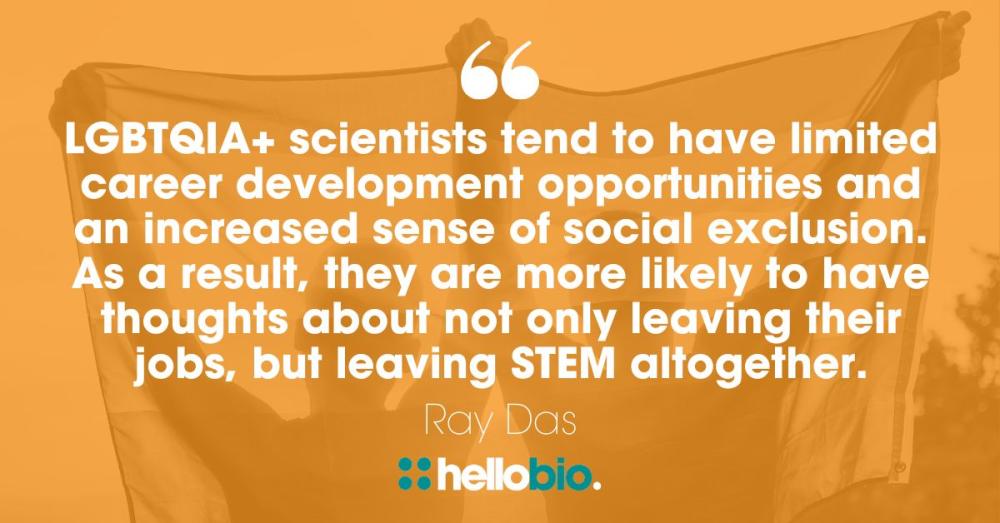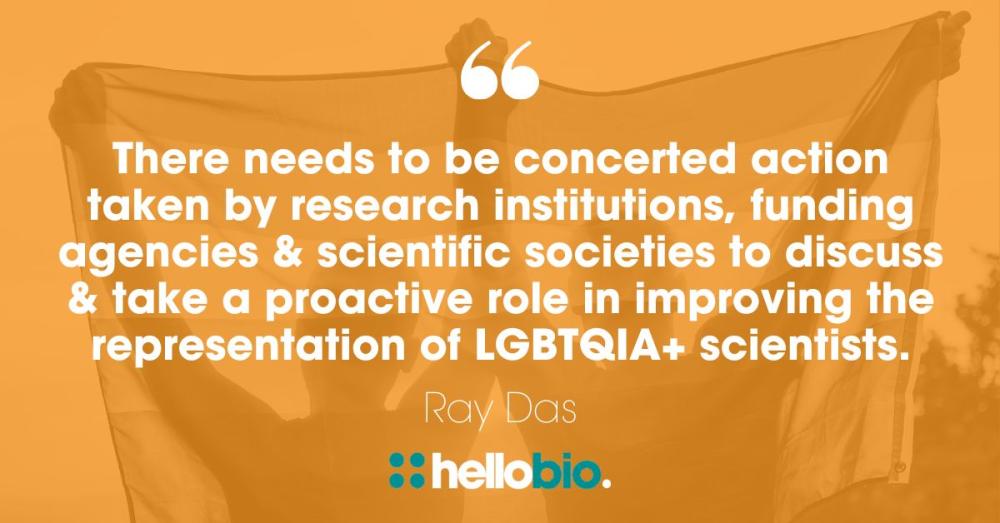How Can We Increase the Visibility of LGBTQIA+ Researchers in STEM?
Our society and its structures are mapped out in a way where we tend to focus on the opinions of those we deem to be important and ignore everyone who does not fall into that category. The field of science is no exception in falling prey to this kind of prejudice.
For the longest time mainstream scientific discourse has been dominated by the works of cisgender heterosexual white men. That is not to say that their research does not deserve credit, as many are the groundwork for the very understanding of life and the world it inhabits. However, science research can only benefit from the input of underrepresented minorities.
Historical discrimination
Prejudice and discrimination have historically led to the ostracization of pioneers such as Alan Turing, the Father of Artificial Intelligence, who was sentenced to chemical castration by the government; and, overlooking the enormous contributions made by Dr. Alan Hart, a trans man in the 1920s who championed the idea of using X-Rays for the diagnosis of Tuberculosis thus making it significantly easier to treat the ailment.
Despite the rise in wider acceptance and discussion surrounding LGBTQIA+ rights, a lot of queer scientists remain isolated and often closeted in their workplace. In STEM, more often than usual our personal lives take a back seat and therefore the idea of bringing up one’s identity as a queer person can sometimes bring about a sense of discomfort.
It is a well known fact that despite the increased rates of acceptance and normalisation of queer identities, there are still many forms of inequality and discrimination that the community is subjected to. In STEM particularly it has been observed that there is an increased rate of devaluation and negative treatment of queer scientists compared to their cis-het counterparts. LGBTQIA+ scientists tend to have limited career development opportunities and an increased sense of social exclusion. As a result of these systemic inequalities, LGBTQIA+ scientists are more likely to have thoughts or plans about not only leaving their jobs but leaving STEM altogether. This consequently results in an acute ‘brain drain’ of queer scientists in STEM.
Freedom of expression in the workplace
This invisibility and lack of representation is further amplified due to constraints on demographic collection processes. In the study conducted by, Casper et. al, it was observed that people are more likely to be open about their identities in data collection procedures if they are provided with a wide spectrum of options that encompass the various queer identities. This shows that recognition of a wider and varied range of identities and a safe and accepting environment allows more queer people to openly express themselves in their workplaces .
However, data collection in such cases often face two challenges: one, constantly keeping up with evolving terminology surrounding identities and, two, not outing people in their workplaces against their will.
After a brief description of the lack of queer representation in STEM and the reasons behind it, the question remains, what can we do to increase the visibility of the LGBTQIA+ community in STEM?
Making connections and building community
Over the years there have been quite a few projects such as 500 Queer Scientists, Pride in STEM and Out in STEM, which work towards providing an opportunity to form a network and connection between queer people spread across various fields in STEM. They allow people to form a community where they can comfortably express themselves and talk about work and exchange ideas with other professionals. These organisations not only host a range of formal and informal events; they also provide queer students and professionals with an opportunity to volunteer and form localised chapters within their universities and workplaces.
Aside from the efforts of these advocacy groups, there needs to be concerted action taken by research institutions, funding agencies and scientific societies to discuss and take a proactive role in improving the representation of LGBTQIA+ scientists. While most institutions do have non-discrimination policies in place, they do not seem to take many steps to promote diversity and improve the numbers of their queer faculty. By hiring more queer staff and faculty and creating a respectable environment devoid of pre-conceived societal biases they can create a comfortable environment for everyone.
Inclusion of LGBTQIA+ scientists in mainstream scientific discourse will provide a more diverse and intersectional view and allow in furthering various aspects of research. Incorporation of gender, racial, sexual, and geographical diversity will contribute to providing a unique and diverse set of ideas, improve decision making and provide us with a higher quality of scientific research.
Learn more about LGBTQIA+ people in STEM through history: https://www.liverpoolmuseums.org.uk/stories/lgbtq-people-stem
……
About the author
Ray Das (they/he) is a neuroscience undergraduate student at the University of Sussex. They have a wide range of interests within the field and they particularly enjoy the topics of organism and machine consciousness and reality and time perception. They are a member of the Sussex Neuroscience Society’s Events Team and hope to work in academia in the future.
___________________________________________
If you enjoyed this article, why not check out the other resources available on our blog. We are passionate about supporting life scientists including early career life scientists and PhD students - with really low-priced reagents and biochemicals, early career scientist grants, and resources to help with both personal and professional development. We know how tough it is - so we hope you find these helpful!
More General Support for Life Scientists
For advice on writing papers, dissertations, presenting at conferences, wellbeing, PhD support, networking and lots more, we have a huge range of articles to help - just click below:
Save up to 50% on our high purity reagents...
When you get to the stage of planning your experiments, don't forget that we offer a range of low-cost, high-purity agonists, antagonists, inhibitors, activators, antibodies and fluorescent tools (yes - they really are around half the price of other suppliers!) You can use our Quick Multi-Search Tool to search for lots of products in one go, and the range includes:
- Enzyme inhibitors and activators
- Chemogenetic ligands
- Ion channel modulators
- GPCR & ionotropic receptor ligands
- Cell biology reagents & biochemicals
Technical resources
Try our Molarity Calculator: a quick and easy way to calculate the mass, volume or concentration required for making a solution.
Try our Dilution Calculator: an easy way to work out how to dilute stock solutions of known concentrations
And finally, don't forget to check back in with our blog regularly for our latest articles. If there’s something you’d love to contribute to the community, whether that’s an interview or article, drop us a line at hello@hellobio.com
---



















